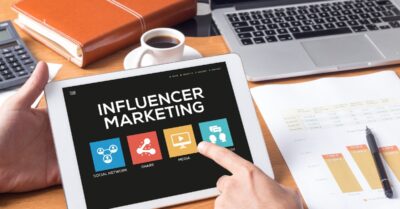The story of modern marketing has been a back-and-forth between people and the machines that claim to understand them. In 2026, that pendulum is swinging back toward humanity. After years of automation, predictive algorithms, and content that felt polished to the point of sterility, consumers are showing signs of fatigue. They want to be spoken to, not at. They want brands that feel alive, not programmed. The irony is that many of the tools making this possible are powered by the very AI systems people thought might erase the human touch. The next wave of marketing won’t be about eliminating technology, but about using it to bring people closer, not push them further away.
A Shift From Perfect To Personal
For years, campaigns chased perfection. Every pixel was aligned, every message A/B tested into oblivion. But perfection is boring. What audiences crave in 2026 is a degree of imperfection that feels real. That means fewer staged stock images and more glimpses of life as it actually looks. Brands are starting to accept that a shaky phone clip from an employee can often outperform a glossy ad shoot because it feels like someone letting you in on something true. It doesn’t mean quality production is dead, only that people are more forgiving of flaws if they believe the intent is genuine.
This trend doesn’t come from marketers alone. It’s being driven by audiences who have grown suspicious of content that looks too staged. TikTok and other short-form video platforms set the stage for this expectation, but it’s spreading into email, digital ads, and even web design. Companies are realizing that their voice matters as much as their visuals, and a single authentic sentence often sticks longer than a tagline sculpted by committee. 2026 will reward brands that loosen their grip, admit mistakes, and allow personality to seep into their messaging.
Local Identity Goes Global
One of the biggest challenges for marketing today is balancing global reach with local resonance. That tension will only grow sharper. A consumer in Los Angeles doesn’t want the exact same campaign as someone in Miami or Madrid. At the same time, companies need coherence. In 2026, this balancing act is leading more brands to hire a branding agency in Miami, Los Angeles and anywhere in between, precisely because local agencies understand cultural nuance in ways global headquarters cannot.
The pendulum swing here is fascinating. For years, global brands tried to create universal campaigns that could run in dozens of markets without changes. Now, the trend is toward modularity. A campaign may keep a core idea intact but allow for localized storytelling, slang, or imagery. Brands that can pull this off will feel bigger and smaller at the same time, speaking to everyone but also to you specifically. The key is trust—trusting local voices to adapt campaigns without diluting the larger message. By 2026, it won’t just be a nice strategy, it will be a survival tactic.
The Comeback Of Direct Connection
Email was supposed to be dying. Direct mail was dismissed as obsolete. Phone calls became a relic of another era. Yet in 2026, these channels are being rediscovered, but not in the old way. They’re being reimagined as places where a brand can actually sound human. A well-written email that feels like it came from one person to another can cut through clutter faster than a hundred algorithmically placed banner ads.
The rediscovery of direct channels speaks to something larger: people want fewer intermediaries between themselves and the companies they care about. That doesn’t mean every brand needs to launch a hotline, but it does mean rethinking how to speak directly without relying on the constant mediation of social platforms. Even direct mail, once written off, is having a renaissance when combined with data-driven personalization. The modern consumer may be tech-savvy, but that doesn’t mean they’re immune to the thrill of receiving something that feels tailored and personal, even if it comes in an envelope.
Rethinking The Metrics That Matter
Marketers have been chasing clicks, impressions, and views for so long that many forgot those aren’t the things consumers care about. In 2026, the smart money is on new benchmarks. Did a campaign actually change how people feel about a brand? Did it make someone laugh, think, or trust more deeply? These aren’t vanity metrics; they’re the ones that last.
Technology is catching up here. Advances in sentiment analysis and real-time engagement tracking allow companies to measure responses in ways that go beyond the simple click. Brands are beginning to prioritize “time well spent” as a metric, acknowledging that a thirty-second genuine engagement is more valuable than a two-second scroll-past. The industry is also rethinking attribution. It’s no longer enough to assign credit for a sale to the last click before purchase. The full path matters, and in 2026, brands will be judged not only on whether they made a sale, but on how they built trust along the way.
The Human Voice In A Digital Age
One of the more surprising trends heading into 2026 is the rise of brand voice as the deciding factor in consumer loyalty. Not the literal voice in a commercial, but the way a brand speaks across platforms. Tone has always mattered, but it’s about to matter more. In an age when AI can generate endless variations of the same ad copy, audiences are developing a radar for sincerity. They can tell when a brand is winging it versus when it knows itself.
This is where marketers are rediscovering the value of creative writing, storytelling, and yes, even humor. Dry, automated responses don’t stick. A brand that dares to be witty or empathetic in real time often earns not only attention but affection. This is especially true in customer service interactions, where robotic scripts are being replaced with responses that sound like they came from a person who cared enough to listen. By 2026, the companies that thrive won’t necessarily be the ones with the loudest voices, but the ones whose voices feel the most alive.
Shifts In The Types Of Digital Marketing That Work
The landscape of types of digital marketing is changing. Social ads aren’t disappearing, but they’re no longer the automatic priority. Content marketing is evolving too, shifting away from keyword-stuffed blog posts toward long-form pieces and interactive formats that actually teach, entertain, or invite conversation. Video remains powerful, but not just polished video. Livestreams, raw footage, and interactive video are gaining traction because they strip away the sense of artifice.
Search marketing is also shifting under the weight of changing algorithms and consumer behavior. People aren’t just searching for products; they’re searching for meaning, guidance, and reassurance. That puts pressure on brands to create content that addresses the whole journey, not just the buying moment. Influencer partnerships are maturing too, with fewer one-off sponsorships and more long-term relationships where authenticity can’t be faked. By 2026, brands that spread themselves too thin across every possible digital channel will feel scattered, while those that double down on a few, doing them well, will stand out.
Technology As The Silent Partner
It might seem contradictory to say marketing is becoming more human while technology plays a larger role than ever. But that’s exactly the paradox of 2026. The AI tools being developed aren’t about replacing human creativity, they’re about clearing space for it. Automation is handling the tedious work of segmentation, personalization, and optimization, freeing marketers to spend more time thinking about stories and relationships.
This is why we’re seeing a new kind of collaboration between tech and creativity. Marketers are no longer treating AI as the answer to every problem, but as a partner that makes space for deeper human thinking. The same is true with analytics. Instead of overwhelming dashboards, brands are beginning to demand tools that surface insights in clear, actionable ways. Technology in 2026 isn’t the star of the show. It’s the lighting crew, the stage manager, the scaffolding that lets the performance happen. The spotlight is back on people.
The New Baseline For Trust
If there’s one word that defines the marketing environment of 2026, it’s trust. Years of misinformation, brand missteps, and broken promises have left consumers skeptical. Rebuilding that trust requires more than flashy campaigns. It means showing consistency across every interaction, from the customer service line to the corporate values behind the scenes.
Transparency is no longer optional. Consumers expect to know where products come from, how data is used, and what a company stands for. Greenwashing, half-truths, and shallow campaigns are getting easier to spot, and once called out, harder to recover from. The brands that succeed will be those that understand trust isn’t a line in a tagline, it’s a standard carried through every touchpoint. By 2026, consumers will reward companies that are honest enough to admit when they’re wrong, human enough to apologize, and confident enough to stay true to their promises.
Closing Perspective
Marketing in 2026 won’t look like a rejection of technology, but a rebalancing act that puts people back at the center. The future belongs to brands willing to trade polish for personality, scale for sincerity, and shortcuts for lasting trust. For all the tools and platforms that will shape the industry, the measure of success will come down to something older and simpler: how well one human voice can connect with another.










